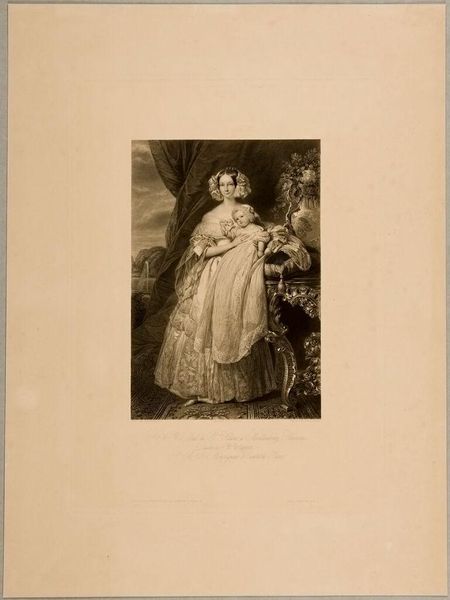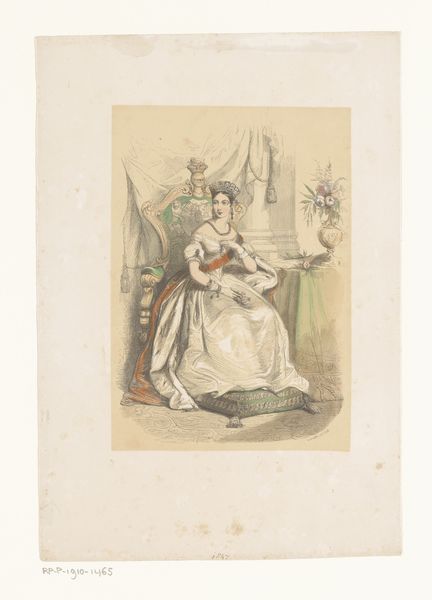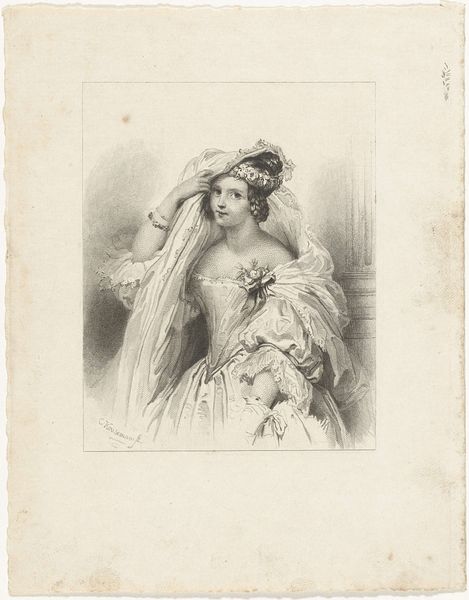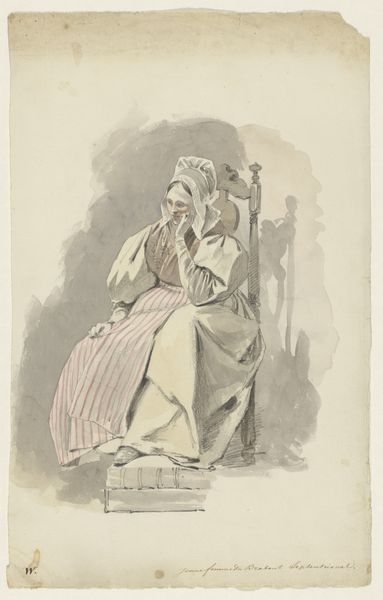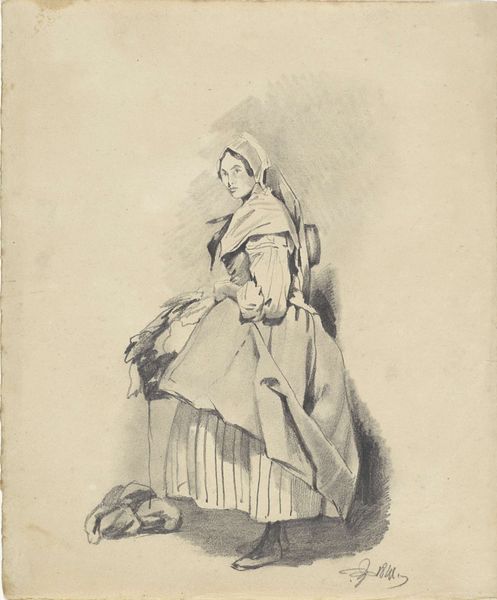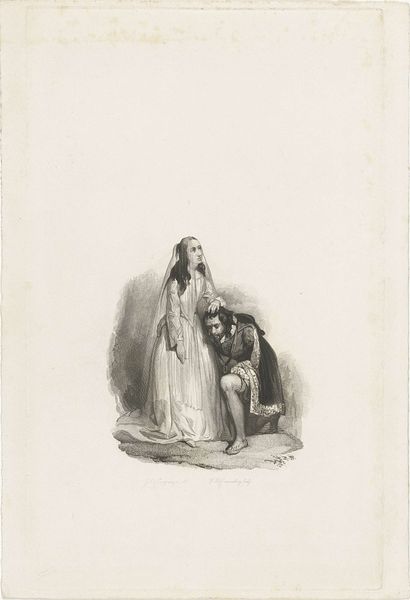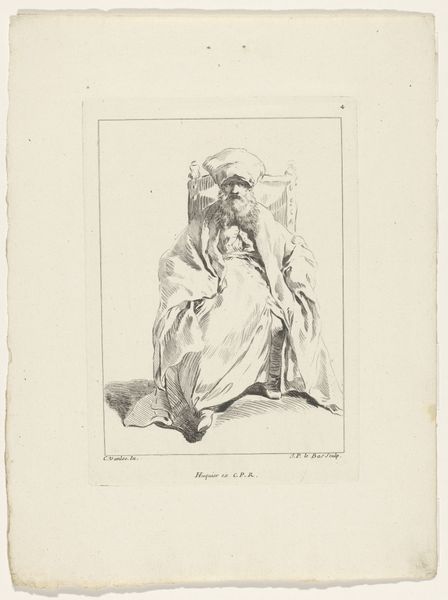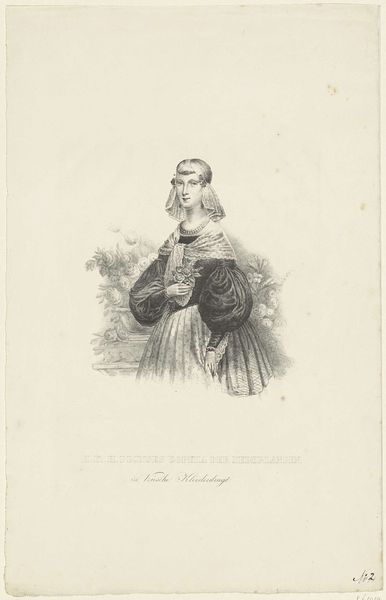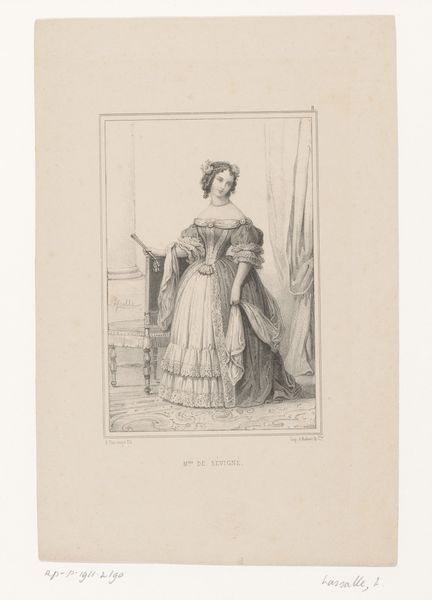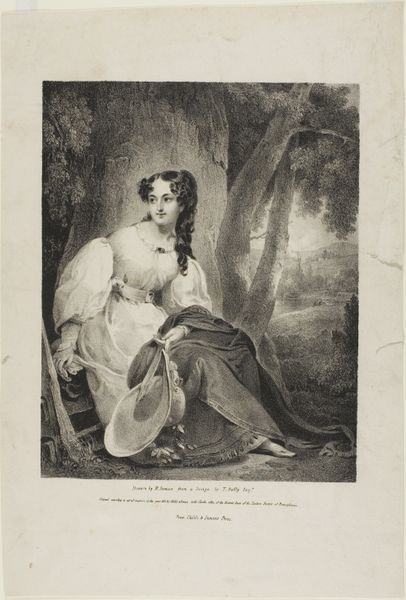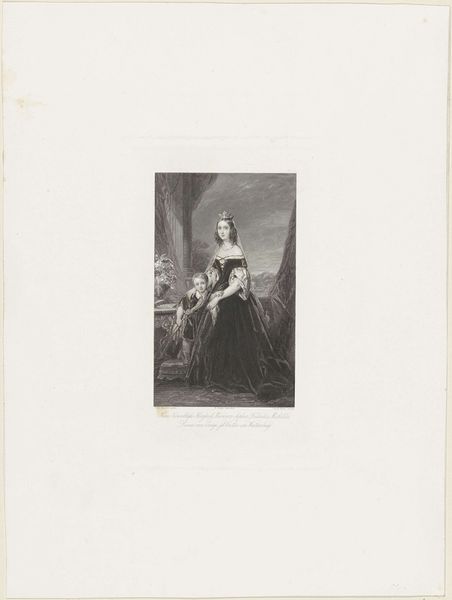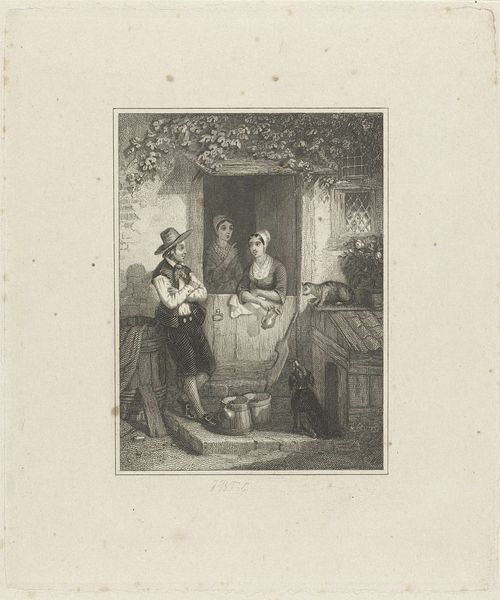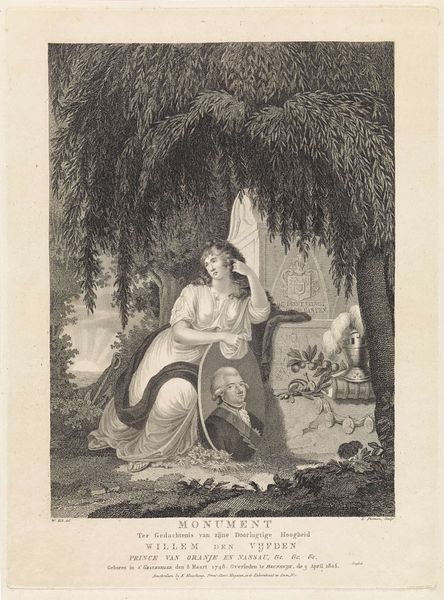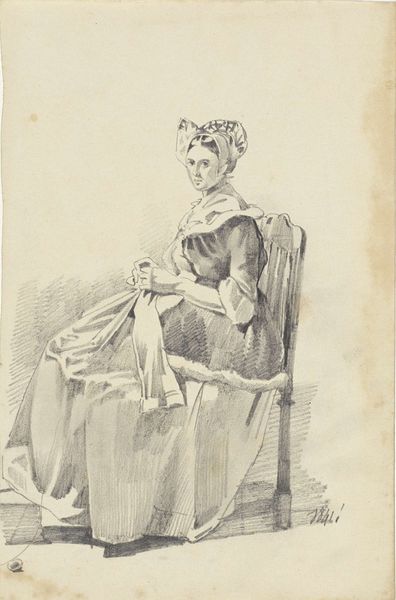
drawing, paper, ink
#
portrait
#
drawing
#
paper
#
ink
#
genre-painting
#
history-painting
#
watercolor
Dimensions: height 280 mm, width 185 mm
Copyright: Rijks Museum: Open Domain
Curator: I find myself captivated by this rendering of Maria Theresa, Queen of Sardinia. The artwork, executed between 1852 and 1869 by J.L. Lacoste, showcases the Queen in an intimate, almost domestic setting rendered meticulously in ink on paper. Editor: It certainly evokes a specific mood. There’s an air of restrained power, wouldn’t you agree? Her gaze is steady, almost confrontational, and yet the muted colors soften what could have been a starkly formal composition. Curator: The use of ink lends itself beautifully to historical context here. It resonates with the documentation, the record-keeping that surrounded figures of power. More interesting still, the backdrop hints at domesticity while a cluster of observers gazes toward the queen, which introduces fascinating themes of public life. Considering the limited tonal range, there are subtle nods to the gendered expectations of her time—to be powerful, but passively graceful. Editor: Absolutely, the visual vocabulary speaks volumes. Note the veil, which is very faint, perhaps suggesting accessibility while still invoking tradition and royal symbolism. She clutches a book, surely not just any book. Do you see that cross etched on the cover? Its presence declares that she is righteous. I wonder what message the artist intended by including that overt symbol. Curator: Indeed, this is not merely a portrait. It operates as a potent assertion of legitimacy and divine authority—and an acknowledgment of a time beset by revolutionary activity, when many monarchies struggled to survive! Maria Theresa, as queen consort, probably had little formal power, but through her piety, motherhood and traditional displays of generosity, she embodied royal values that shored up the monarchy. Editor: So the artist creates not just an image but a complex symbol intended to resonate across generations. Fascinating how a seemingly straightforward portrait becomes a nexus of political, religious, and personal narratives. It pushes the portrait genre beyond the purely aesthetic. Curator: Precisely. Examining the image through that historical and socio-political lens allows us to dissect power structures inherent within portraiture itself. These elements coalesce to transcend a simple depiction of a queen, transforming it into a layered artifact of 19th-century ideology and a rich contribution to our own critical engagement with the past. Editor: I will definitely look at historical portraiture through new eyes after our conversation!
Comments
No comments
Be the first to comment and join the conversation on the ultimate creative platform.
